19 Disturbing And Shocking Facts About The Assassination Of John F. Kennedy
President John F. Kennedy was assassinated on Nov. 22, 1963, while riding in a motorcade through Dealey Plaza in downtown Dallas, Texas. He was visiting the city as part of his re-election campaign. Here are some dark, unnerving, and surprising facts about the historic and tragic event:
Note: Graphic and intense content ahead, including an autopsy photo.
1.Kennedy had only been in Dallas for about one hour when he was assassinated...
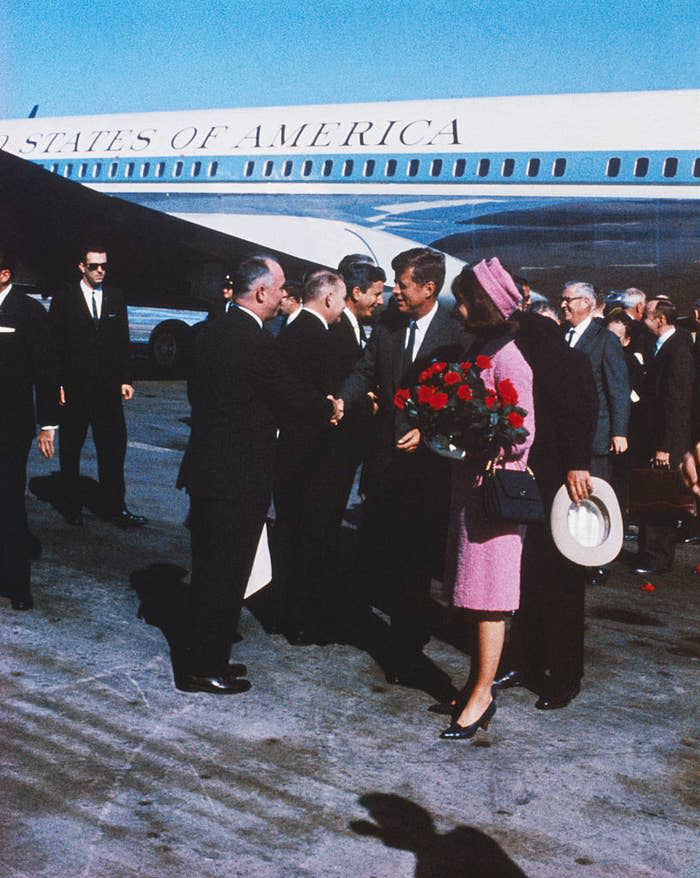
Air Force One landed at Love Field in Dallas at 11:30 a.m.
Kennedy was assassinated at Dealey Plaza at 12:30 p.m.
2....and his body left Dallas, flown via Air Force One back to Washington, DC, just over three hours after the time he'd landed in Dallas that morning.
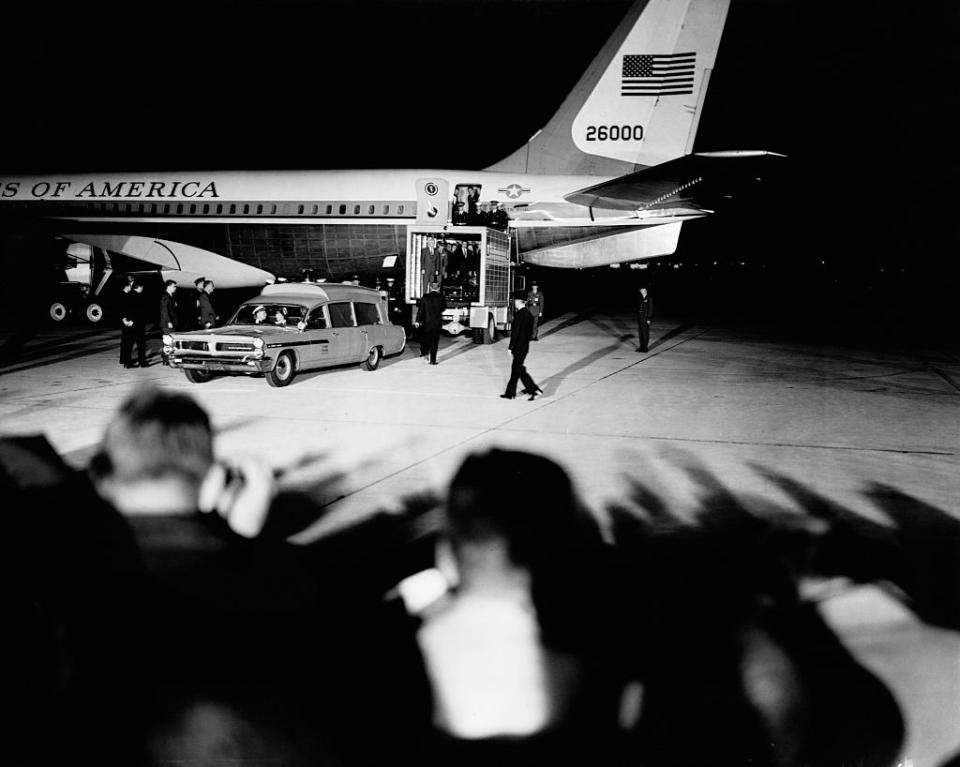
Air Force One left Dallas, with Kennedy in a casket, at 2:47 p.m.
3.When Mrs. Kennedy joined the swearing-in of Vice President Johnson aboard Air Force One, Johnson's wife asked Mrs. Kennedy if she wanted to change out of her blood-stained dress. Kennedy famously replied, “Oh no, that’s all right. I want them to see what they have done to Jack.”
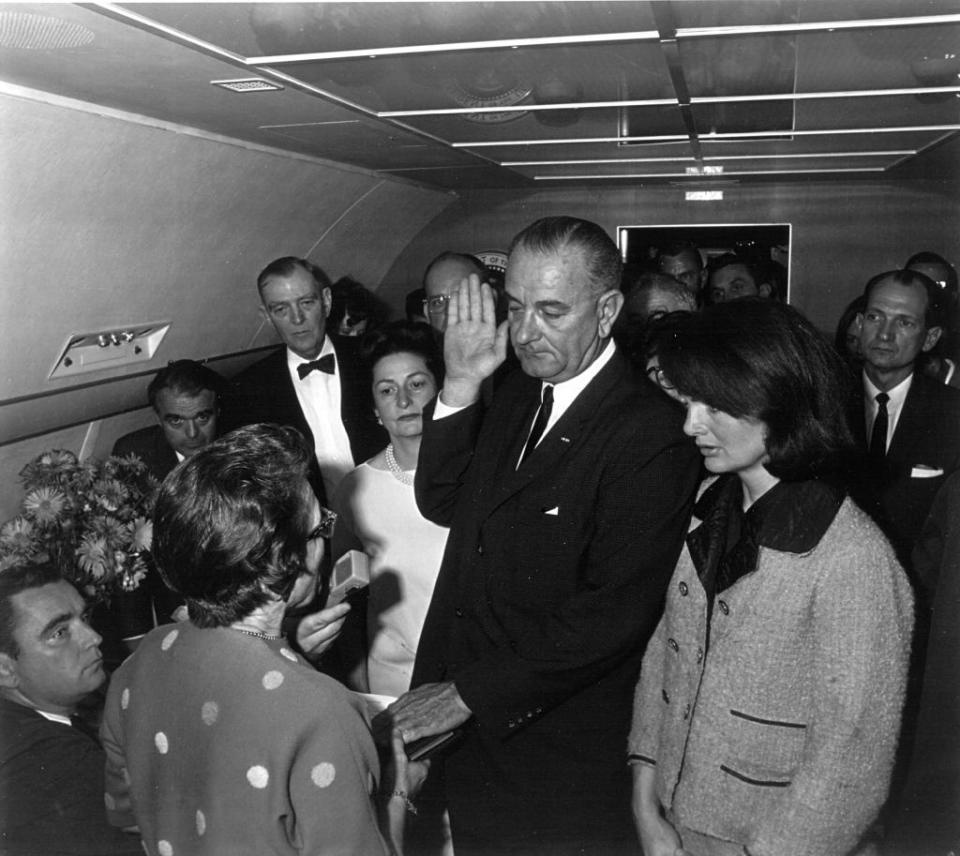
4.That famous pink Chanel suit is still around. It remains uncleaned and is currently stored inside a climate-controlled vault in the National Archives and will remain "out of public view" until at least 2103.
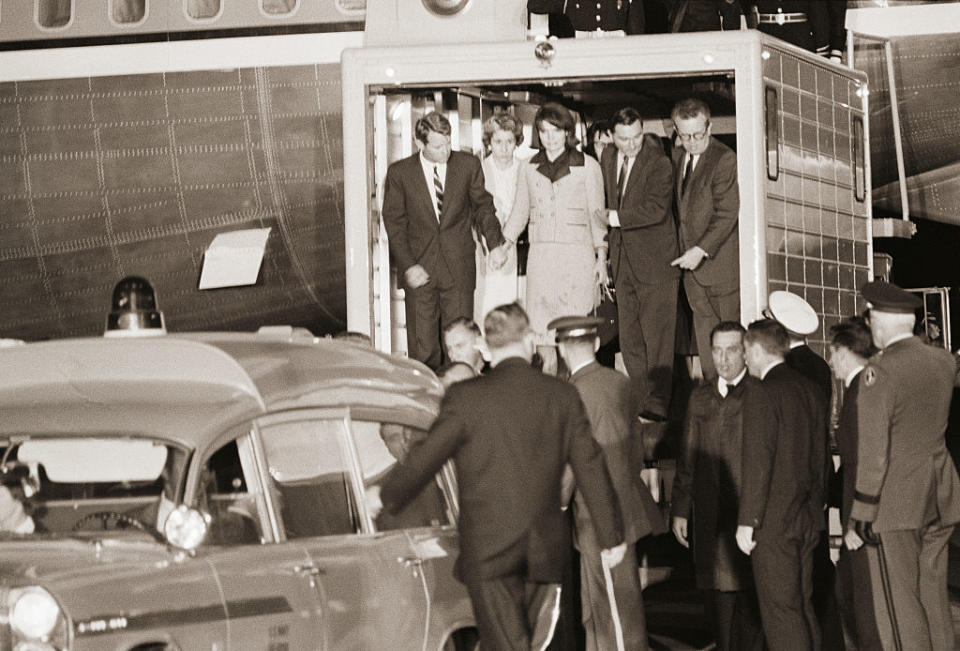
According to Business Insider, sourcing the New York Times, "After Jackie Kennedy's death in 1994, the items were bequeathed to her daughter and sole surviving heir, Caroline Kennedy. However, they remained at the archives during this time.
In 2003, Caroline Kennedy officially transferred ownership to the National Archives with the provision that they would be hidden from public view for another 100 years."
5.The car John F. Kennedy was riding in when he was killed continued to be used even after his assassination. Initially, the 1961 Lincoln Continental Presidential Limousine, called "X-100" by the Secret Service, was impounded for evidence after the assassination. However, in December 1963, roughly a month after JFK's death, the White House approved a plan to revamp the car. After some work and testing, it was delivered to the White House.
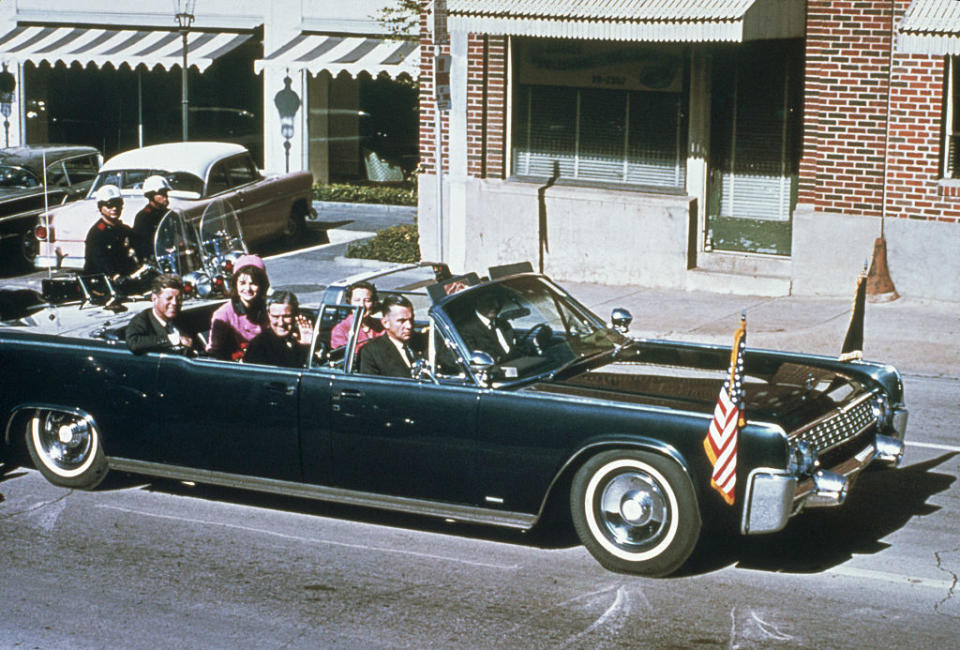
Then, in 1967, it went through "major modifications" and went on to be used once in a while through the Carter administration. It was then returned to Ford (as it was actually a lease) in 1977 and is now on display at the Henry Ford Museum in Dearborn, Michigan.
6.Clint Hill, a secret service agent who served on Jackie Kennedy's Secret Service detail — and who famously jumped onto the back of Kennedy's limo, shielding Jackie Kennedy and the already-hit Kennedy — still says he feels "a sense of guilt" to this day.
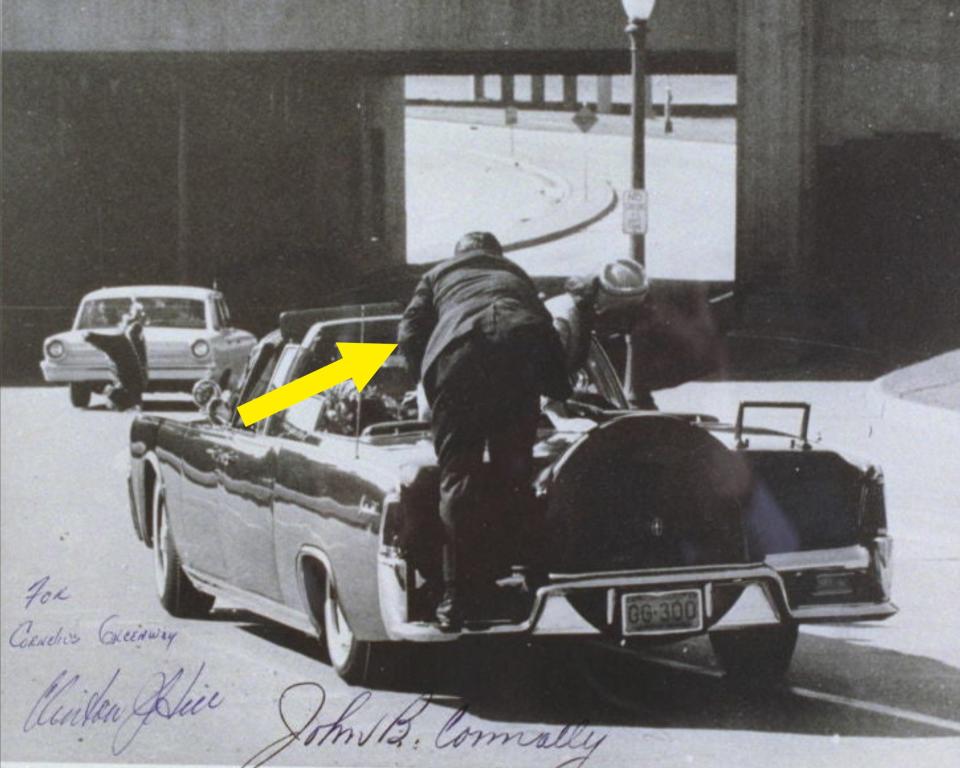
Speaking in the National Geographic documentary, JFK: One Day in America, Hill said, "I should have been able to do more than I did. I wasn't fast enough. I guess I wasn't faster than a speeding bullet."
As of 2023, Hill is the last surviving person who was in the presidential limo that day.
7.According to Hill, after Kennedy was shot, Jackie Kennedy screamed, "They shot his head off! ... I love you, Jack."
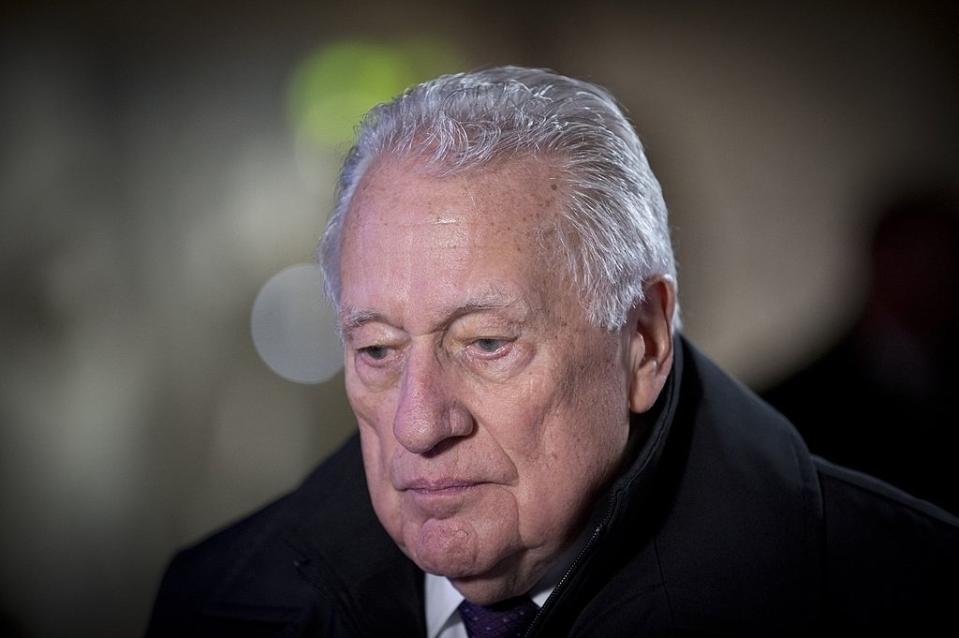
8.The scene of the assassination was completely chaotic, with no one really knowing what was happening. Speaking in JFK: One Day in America, Sid Davis, a Washington correspondent who was in the press bus following the motorcade, explained, "I saw a father take a little boy, and place the boy on the ground, and he put his body on top of the boy."
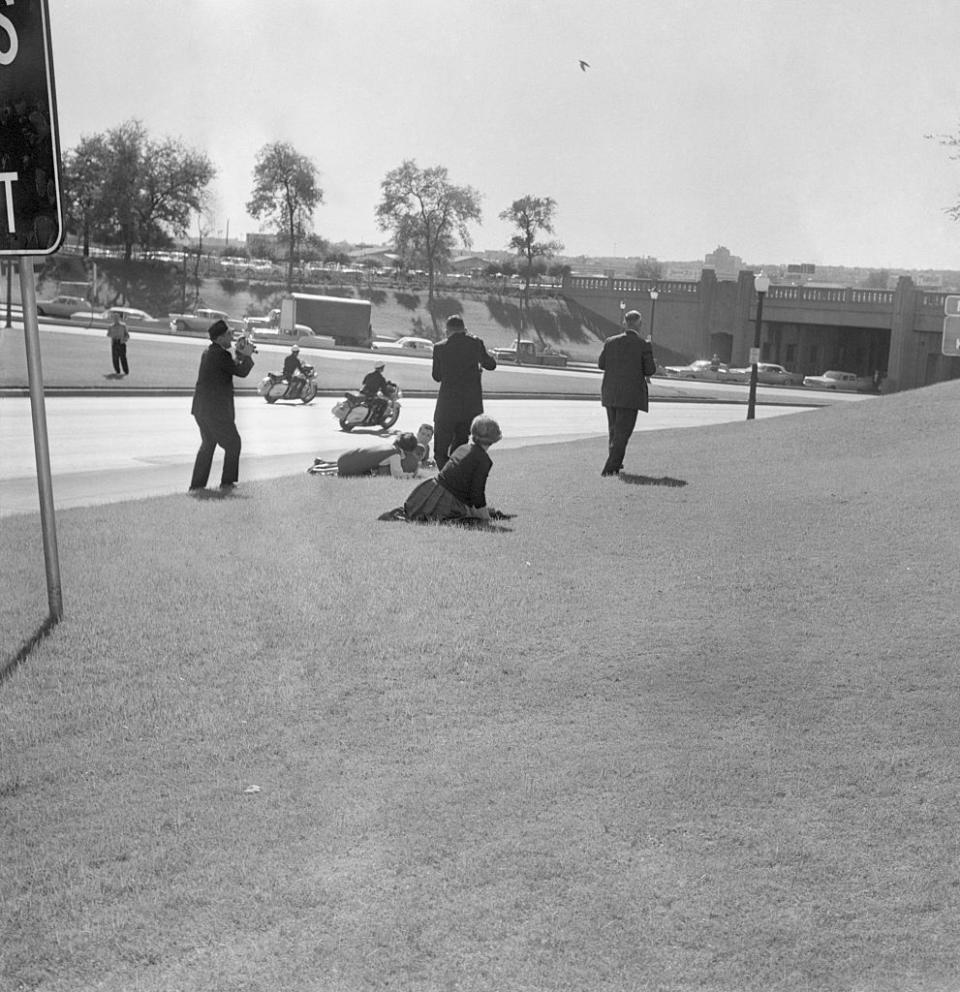
9.When Kennedy arrived at Parkland Hospital, he was declared "moribund," meaning "in the state of dying."
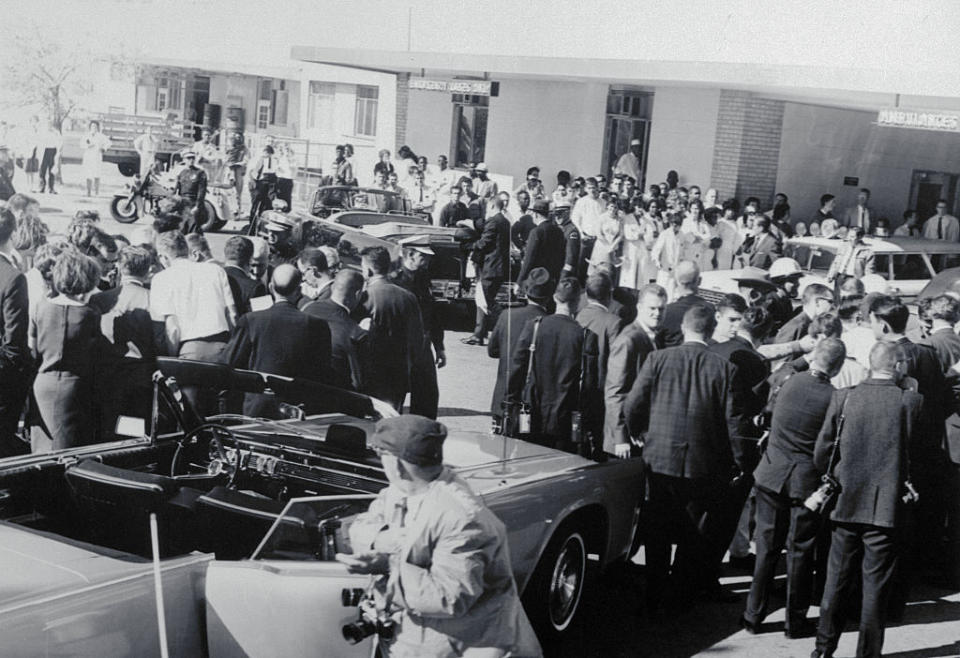
According to Vanity Fair, the surgical team performed a tracheotomy "hoping to provide needed oxygen through a ventilator to keep him breathing (which by that time was described as gasping or agonal respiration)."
10.According to the President's Commission on the Assassination of President Kennedy (aka the Warren Commission), Lee Harvey Oswald acted alone and fired three shots at the President, with the second and third shots fired actually hitting him.
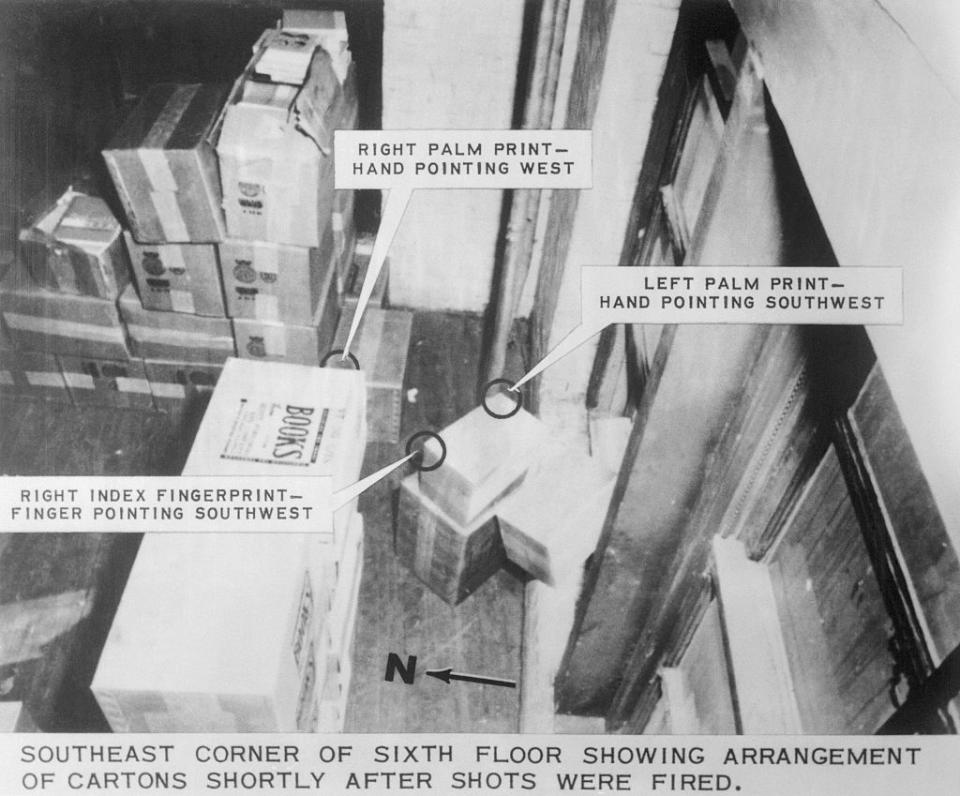
As explained in the National Archives, "According to the Commission, one bullet hit the President near the base of the back of the neck, slightly to the right of the spine, and exited from the front of the neck. The other entered the right rear of the President's head and exited from the right side of the head, causing a large wound."
11.Interestingly, according to the National Archives, "The Commission based its findings primarily upon the testimony of the doctors who had treated the President at Parkland Memorial Hospital in Dallas and the doctors who performed the autopsy on the President at the Naval Medical Center in Bethesda, MD."
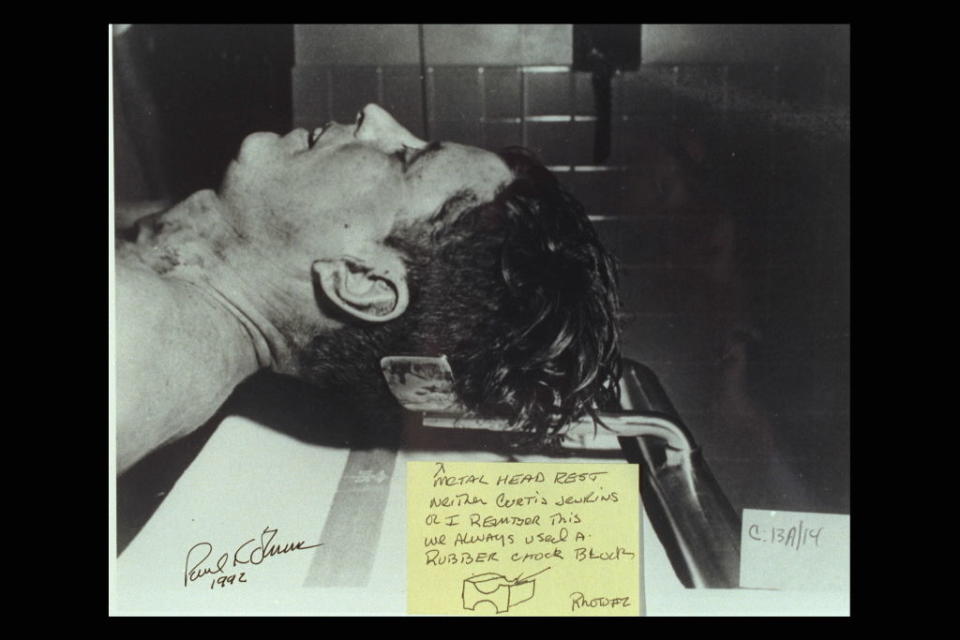
The article continued, "In forming this conclusion, neither the members of the Warren Commission, nor its staff, nor the doctors who had performed the autopsy, took advantage of the X-rays and photographs of the President that were taken during the course of the autopsy."
12.The famous Zapruder film, which is the only film known to exist showing all of the shooting, was not shown to the public until 1975, over a decade after the assassination.
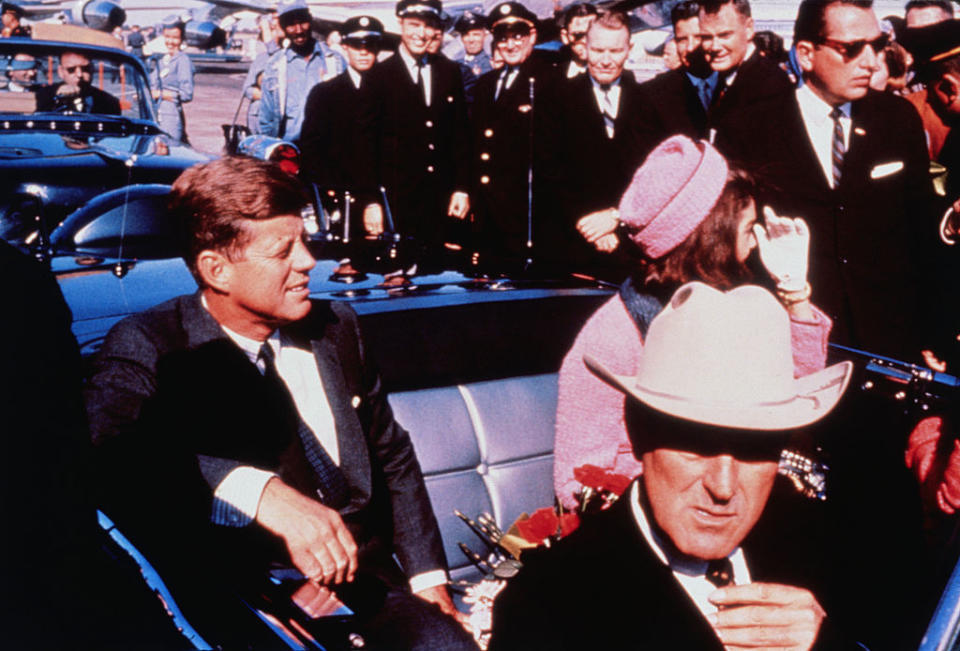
According to the Sixth Floor Museum, "When Abraham Zapruder sold his film to Life magazine the day after the assassination, it was with the understanding that the magazine not exploit the graphic details of the president’s death. Life executives agreed to withhold the film from public exhibition until emotions cooled down. The film was first aired on television by Geraldo Rivera on March 6, 1975, on the ABC show Good Night, America."
Note: The image above is NOT from the Zapruder film.
13.There has been A LOT of skepticism and conspiracy theories surrounding the assassination of President Kennedy over the years — and part of that is because of the Zapruder film. For example, in the film, you can see that the President's head appears to be thrown backward as the front right side of his head appears to "explode," which has made many conspiracists believe that the President was hit by a bullet shot from the front (aka the "grassy knoll" theory).
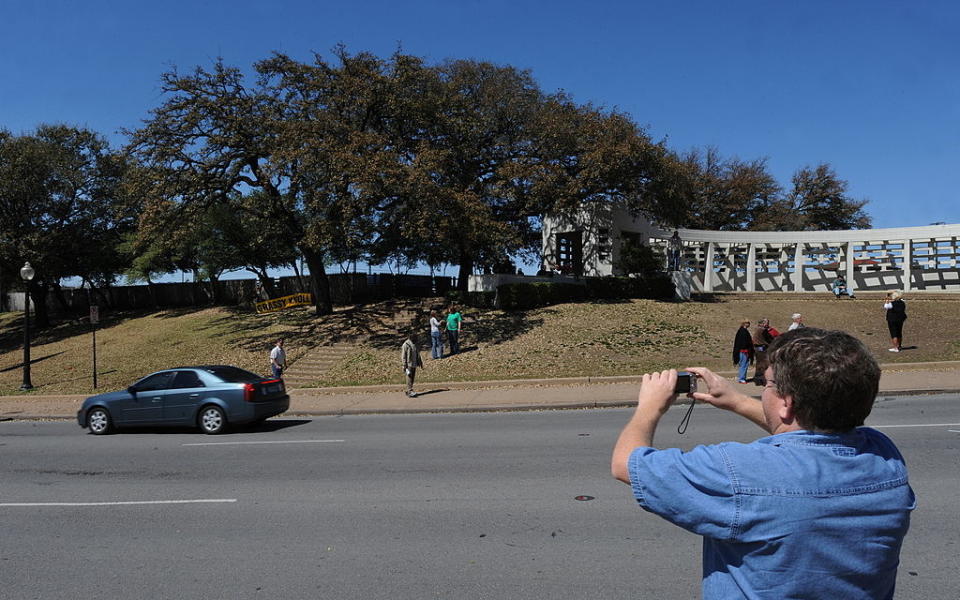
14.The Zapruder film is widely available for viewing on YouTube, where you can see the actual assassination. (Warning: It is very graphic.)
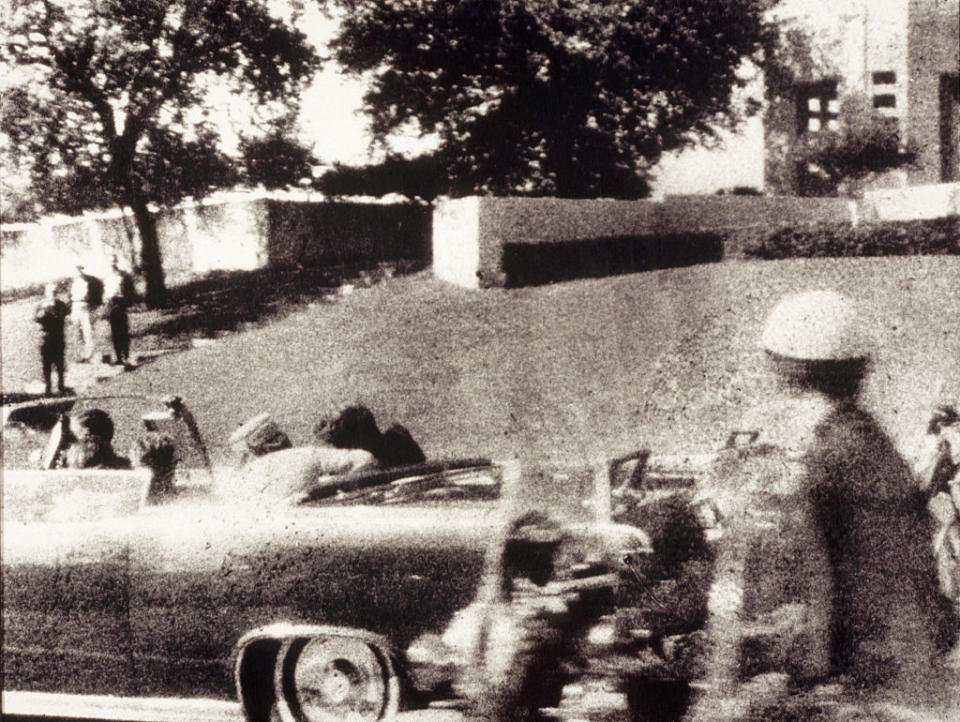
Note: The image above is NOT from the Zapruder film.
15.Lee Harvey Oswald actually attempted to assassinate a former Army general several months before he killed Kennedy.
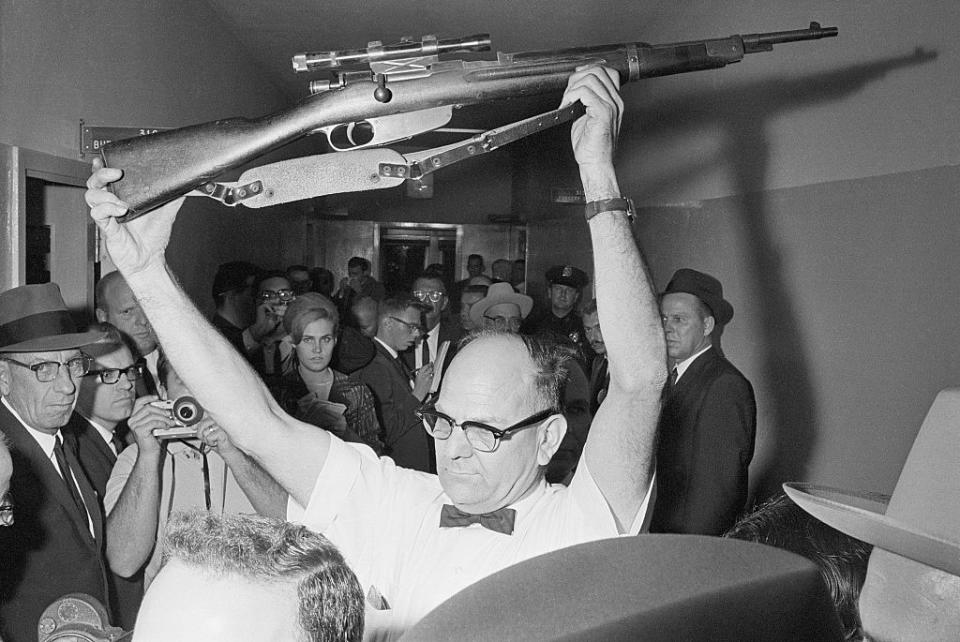
According to Smithsonian Magazine, "Seven months before Lee Harvey Oswald shot President John F. Kennedy, he took his Mannlicher-Carcano rifle (the one he'd eventually use to kill Kennedy) to Major General Edwin Walker‘s house, stood by the fence, aimed toward the window, and shot at him. Oswald missed his shot and escaped into the night."
16.Oswald himself was killed just two days later on live TV by Jack Ruby, a nightclub owner whose motive was never made entirely clear...
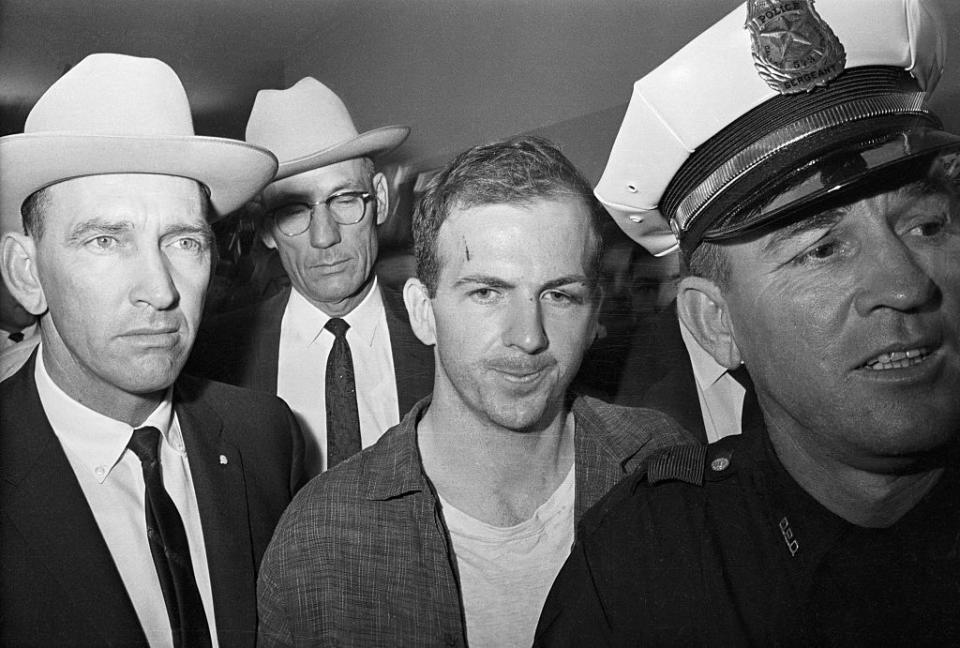
However, former police officer Rusty Robbins, who knew of Ruby, said in JFK: One Day in America, "Jack did what he did. He wanted to be somebody. Everybody loved the president so everybody hated the man who had killed the president. Somehow [Jack thought] this was going to make Jack a hero."
17....and this became the first known human killing seen on live TV.
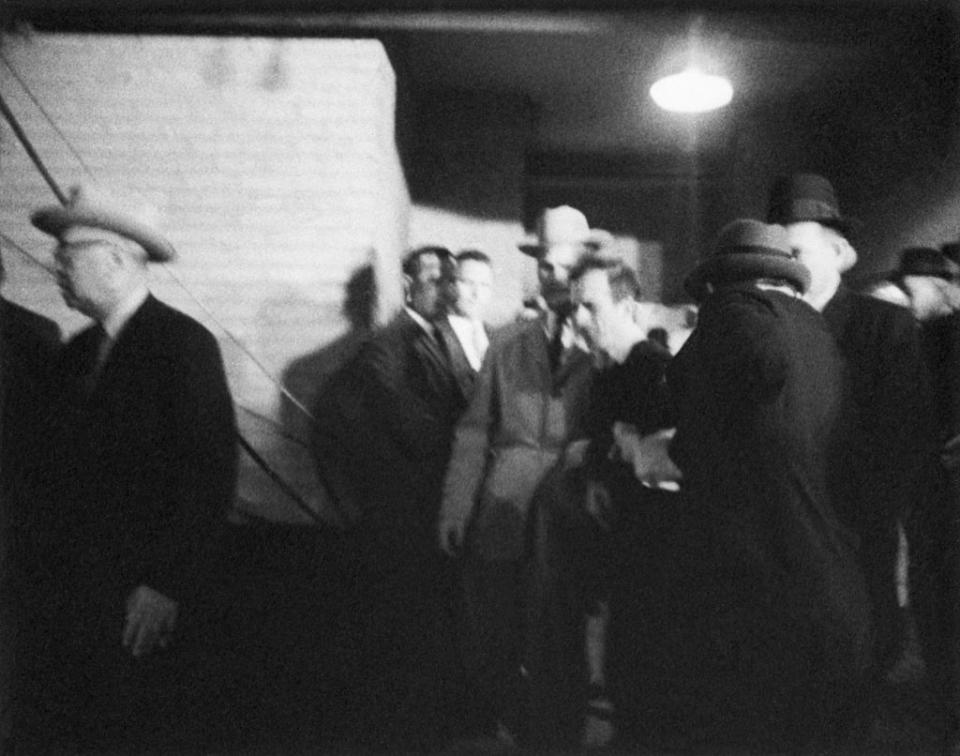
18.No definite conclusion was ever reached as to what Lee Harvey Oswald's motive was. However, the Warren Commission did conclude that Oswald acted alone.
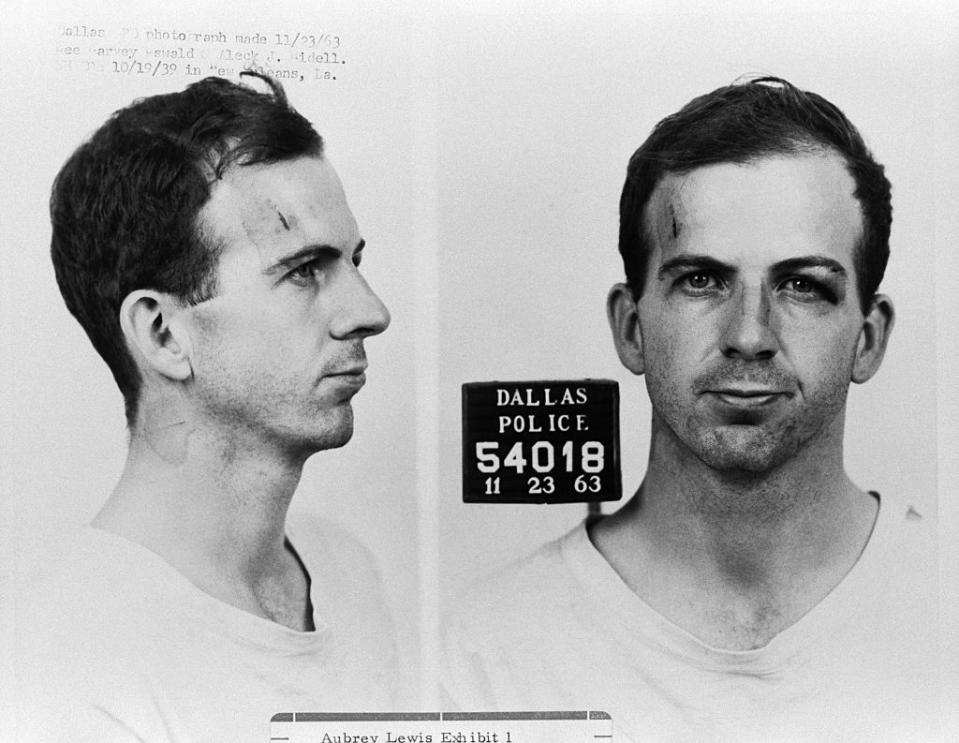
19.Finally, Kennedy wasn't the only person killed that day by Lee Harvey Oswald. Oft forgotten is that a police officer, J.D. Tippit, was also killed — shot three times in the chest and once in the temple — by Oswald roughly 45 minutes after Kennedy had been killed.
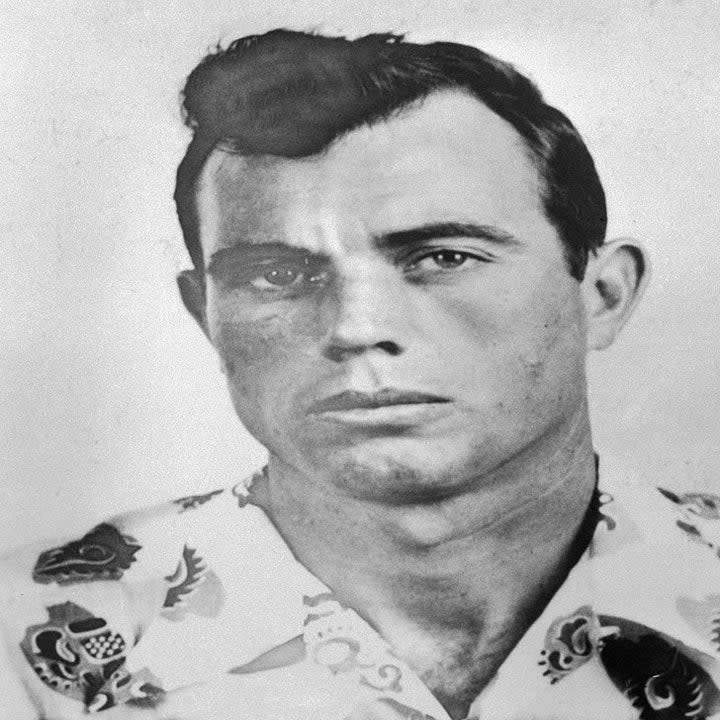
According to CBS New Texas, "Tippit saw Oswald walking down 10th Street and stopped to ask him a question. Witnesses say Oswald shot Tippit four times. Oswald was later arrested in the Texas Theatre a few blocks away."


